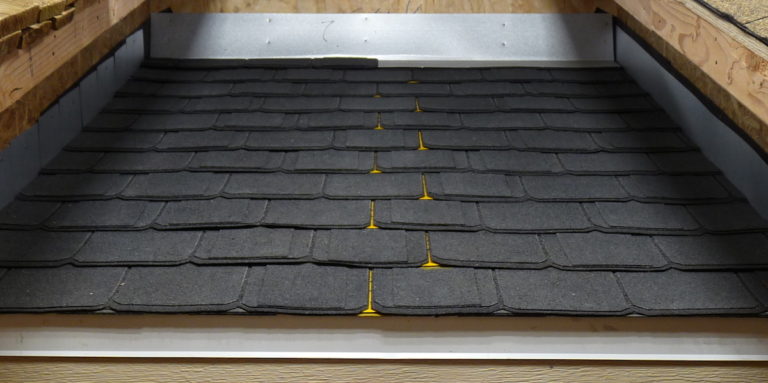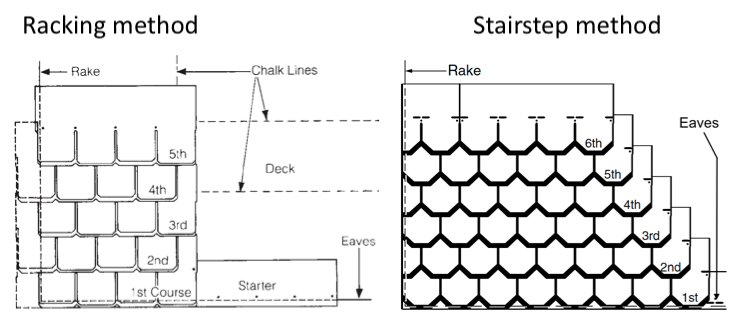STANDARDS OF PRACTICE
The International Standards of Practice for inspecting the roof system is located at www.nachi.org/sop.
MASTERING ROOF INSPECTIONS
To learn about inspecting roofs, please visit Mastering Roof Inspections.
HIGH-QUALITY DIMENSIONAL SHINGLES

These are examples of high-quality, laminated shingles. Some of the more expensive laminated shingles may have up to five layers and weigh close to 500 pounds per square. These shingles may be designed to withstand winds of up to 130 miles per hour.
These particular shingles are CertainTeed Grand Manor. The manufacturer requires them to be installed using the “racking” method, and this is true for a few other shingle models. Racking is recognizable by the location of the joints between shingles; they continue straight up the roof alternating back and forth (joints highlighted in the photo above in yellow).
For most shingles, racking is either incorrect or not the preferred method. If you see racked shingles, that is what your report should say unless you are familiar with the shingles and know that racking is an acceptable installation method.

Typically, shingles are installed using the “stairstep” method shown in the illustration above.
Different types of problems can occur when the racking method is used with the wrong type of shingle:
- The racking method requires leaving the last nail out of every other shingle to allow for the installation of the next course. Installers sometimes neglect to go back and install these missing nails, which can reduce the shingles' wind resistance.
- During cold-weather installation, lifting shingle tabs to install the missing nails may crack or crease them.
- Racking can sometimes result in improper color blending.
Sidewall Flashing

The left side has step flashing as recommended by the manufacturer. The right side has continuous flashing as required by the state of Florida.
